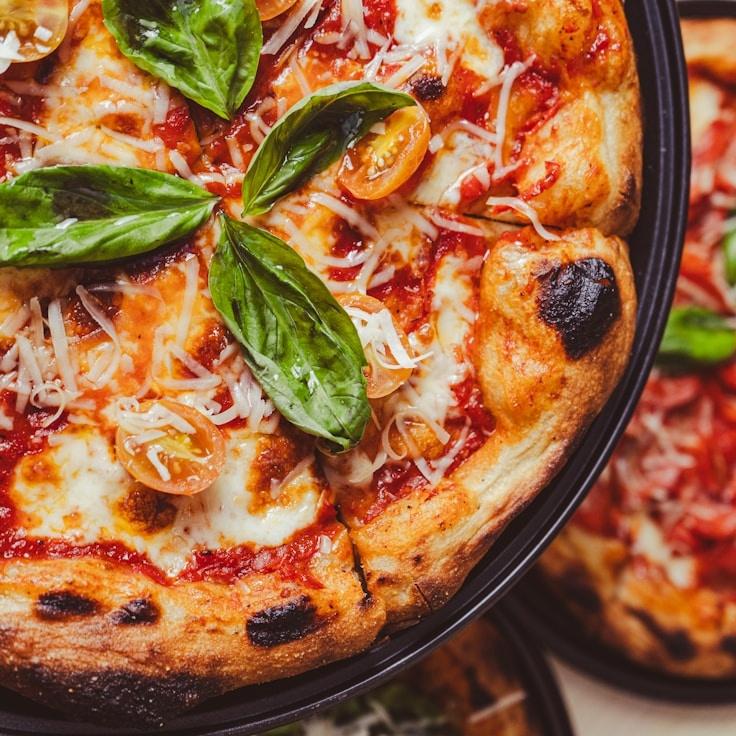At Ember & Basil Pizzeria, we’re convinced that great pizza begins with great dough. After more than thirty years refining our method, we’re happy to pass along a few insights. While our exact formula remains a closely held tradition, these guidelines will help you craft pizzeria-worthy dough at home.
Flour Makes the Difference
The base of excellent dough is top-tier flour. Choose “00” flour—an ultra-fine Italian grind with around 12% protein—for a sweet spot between strength and tenderness. If “00” isn’t available, bread flour is a workable stand-in, though the texture will vary slightly.
Water Temperature and Hydration Levels
Water temperature shapes fermentation speed and dough development. For slower fermentation and deeper flavor, use cold water near 45°F (7°C). For a faster rise, use lukewarm water around 85°F (29°C). Aim for 60–70% hydration for most home-oven setups.
Less Yeast, More Time
Big flavor comes from minimal yeast and extended fermentation. We use just 0.2% fresh yeast relative to flour weight for dough that rests 24–48 hours. This gentle approach builds complex taste and yields a dough that’s easier on the stomach.
Salt: More Than Seasoning
Salt doesn’t only add taste—it reinforces gluten and tempers fermentation. Use fine sea salt at 2.5–3% of your flour weight. Add it after flour and water begin to come together so it doesn’t directly touch the yeast.
Mastering Fermentation
Once mixed, let the dough bulk ferment at room temperature for about 2 hours, then portion into individual balls. Store them in covered containers and refrigerate for 24–72 hours. During this cold rest, enzymes convert starches into sugars, building flavor and promoting the lovely browning on the crust.
Gentle Handling
When you’re ready to bake, bring the dough out of the refrigerator 1–2 hours beforehand to take off the chill. Handle it softly to preserve the gas bubbles. Stretch with your fingertips instead of using a rolling pin, which squeezes out those valuable air pockets.
The Finishing Factor: Heat
Our wood-fired ovens run up to 850°F (454°C), while most home ovens top out near 550°F (288°C). To bridge the gap, preheat a pizza stone or steel for at least one hour. That concentrated bottom heat delivers a crisp exterior and an airy, open crumb.
Perfecting pizza dough is an ongoing exploration. Each batch teaches you something new. Take notes, tweak variables, and find the sweet spot for your kitchen.
If you’d like to watch our dough process up close, join one of our monthly pizza workshops where Chef Dario walks through these techniques step-by-step. Check our events calendar for the next sessions!

